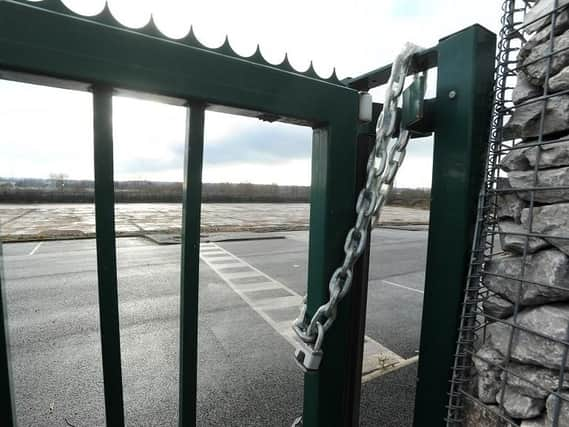10,000 new homes for Wigan in the next 15 years


Wigan Council launched its “brownfield register” to promote land which has previously been developed then abandoned as the most welcome sites for new accommodation as the local population grows over the next 15 years.
Other news: Major overhaul planned for Wigan interchange
There was uproar last year when green belt was identified for possible home and industrial use on a county-wide planning blueprint.
Advertisement
Hide AdAdvertisement
Hide AdAnd this is still not off the agenda, as it is predicted that more than 20,000 homes will need to be built locally by 2035.
The brownfield sites map emphasises the authority’s desire to redevelop sites that have already previously had homes, offices, factories or shops on them, and so avoid pressing virgin land into construction service for the first time.
The authority’s brownfield land register identifies 130 disused sites suitable for new housing development which, it estimates, could accommodate around 9,600 new homes between now and 2035.
But overall the town hall expects that more than 21,000 homes will be constructed during that period, meaning some 10,400 won’t be on brownfield sites.
Advertisement
Hide AdAdvertisement
Hide AdThat doesn’t mean that the remainder will be built on green belt - there is other open land which isn’t protected and sometimes several new homes can be built on land within existing homes.
But neither does the plan mean that the possibility of green belt development has gone away.
Matters came to a head last year when the last remaining green belt in Pemberton - an area known as The Bell - appeared in the Greater Manchester Spatial Strategy: a blueprint for possible development sites drawn up by the Greater Manchester Combined Authority.
It led to major protest and even a rare split in Wigan Council’s ruling Labour Party.
Advertisement
Hide AdAdvertisement
Hide AdSince Andy Burnham became the Mayor of Greater Manchester he has expressed a wish to see brownfield sites re-used for development whenever possible and so the strategy was sent back to GMCA for reconsideration.
Whether sites such as The Bell will have disappeared from the next draft remains to be seen. Some councillors have said that, while it is regrettable that some green belt might have to be sacrificed, there are other considerations including job creation, the local economy and the need to build lots of new homes for a growing population.
In the meantime, residents can focus on the brownfield register which flags up a host of sites, larger ones of which will already be familiar as places which have attracted planning applications.
These include The South Hindley site - itself not without critics - Northleigh, Hindley Green, Westleigh Waterfront, Bradley Lane at Standish, Land Gate at Ashton and the only part-developed Westwood Park south of Wigan town centre.
Advertisement
Hide AdAdvertisement
Hide AdIn the town centre itself can be seen a number of smaller sites, including what was to have been phase two of the Grand Arcade at the bottom of Millgate, land around the back and side of the Premier Inn on Harrogate Street and the former Wigan town hall on Rodney Street, currently a temporary car park.
Other sites of interest include the former Regent Truck site on Frog Lane, the one-time Betafence land off Woodhouse Lane, what used to be the home to Standish ambulance station, the old Hovis Bakery on Cale Lane, New Springs, and that notorious vandal and arsonist magnet known as the Pagefield Building on Bridgeman Terrace.
The borough has a strong track record in delivering brownfield sites for housing, with almost 1,000 homes built on previously developed sites over the last two years - two-thirds of the total completed.
Wigan Council has a 10-year ambition to deliver enough quality housing to match demand and provide jobs and economic growth for the benefit of residents.
Advertisement
Hide AdAdvertisement
Hide AdAs set out in its Economic Prospectus, the council aims to create 10,000 jobs, enable the building of 10,000 new homes and create 12,000 apprentices over the next decade.
Karl Battersby, council director for economy and environment, said: “The council is committed to maximising housing delivery on previously developed sites in the borough.
“Brownfield land will make a significant contribution to addressing housing needs over the next 20 years.
“A key objective for the council is to reduce the amount of green belt release needed to meet housing needs. The sites in the brownfield register will contribute to this need.”
Advertisement
Hide AdAdvertisement
Hide AdAround 70 sites within the brownfield register already have planning permission, totalling around 5,400 homes, with the remainder deemed to be available, suitable and deliverable in the short to medium term.
Due to the borough’s mining and industrial past, a proportion of the brownfield sites have development constraints which need to be overcome, including contamination and mine shafts.
The council is committed to unlocking these sites and to proactively work with landowners and developers to bring these sites forward. Wigan borough’s brownfield figures are:
50.7 per cent of the borough’s housing land supply (2017-35) is on brownfield sites (10,675 of 21,036 homes)
Advertisement
Hide AdAdvertisement
Hide Ad65.8 per cent of net housing completions were on brownfield land between 1 April 2015 and 31 March 2017 (958 of 1,456 homes)
Any landowners with brownfield land available for development should contact the council.
The borough’s brownfield register can be viewed at: www.wigan.gov.uk/brownfieldregister. Viewers can click on each shape on the map to obtain a description of what the site used to be.